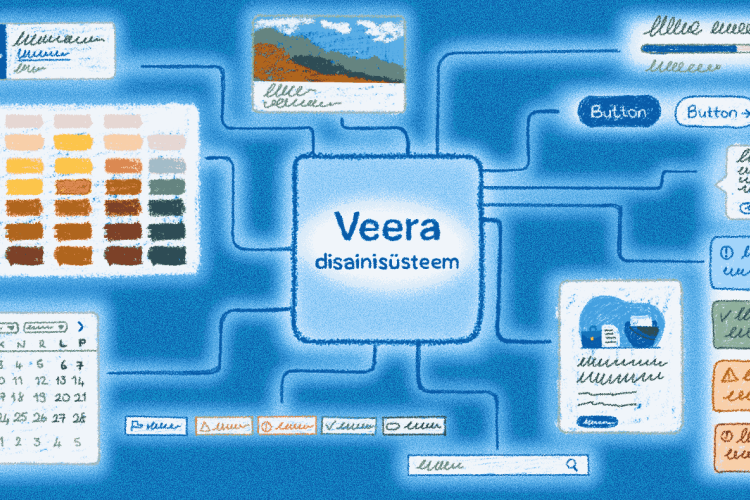What should you consider when planning to adopt low-code or no-code tools?
Low-code and no-code are popular terms that are on the minds and tongues of almost everyone interested in IT these days. In this article, we will explore this trend in more detail. We will discuss the main differences between low-code and no-code solutions and discuss the benefits our clients could gain from them. We will list the important nuances of low-code/no-code tools that you should consider when making IT decisions within your organization.
What do the studies say?
The results of surveys confirm the popularity of low-code/no-code platforms. A few years ago, in a survey conducted among IT executives, 60-70% of them stated that their organizations were already implementing low-code and no-code frameworks/tools.
Gartner, a technology research and consulting company, predicted last year that by 2025, 70% of new applications will be developed using low-code tools, and by 2023, this sector will grow globally by 20%. This trend is driven by the speed of application development enabled by low-code tools and the growing need for organizations to automate their workflows.
Who are the main users of low-code and no-code solutions?
The perspectives of IT leaders on the prospects of low-code and no-code tools vary, but most see great potential in these areas. Many IT executives have already implemented or plan to implement these tools/frameworks to increase agility and accelerate application development, thereby driving their organization's digital transformation.
Small and medium-sized enterprises are more likely to be users of low-code/no-code tools. In larger organizations, the adoption of these technologies is often hindered by existing complex IT systems that require high flexibility and customization capabilities from new solutions. The popularity varies across sectors.
Sectors with higher security risks and more regulations, such as finance and healthcare, are more cautious when adopting low-code/no-code tools. IT leaders with a strong technical background tend to be more reserved in implementing low-code/no-code solutions, fearing the limited customization options and lack of complete control over the tool/framework.
The evaluation of low-code/no-code tools by IT decision-makers is largely based on personal experience with these tools. It is also important to note that a low-code/no-code tool/framework that works well for one organization may not necessarily be suitable for another organization with a similar profile. Before making a decision on tool adoption, it is crucial to thoroughly consider the unique needs and requirements of each organization.
The main differences between low-code and no-code solutions: for a no-code user, application development is made easy, but the options are limited. This means that the user can only work with what they see in the (graphical user interface). These are tools/frameworks that allow the automation of code creation through the user interface, typically using drag-and-drop and point-and-click methodologies. No-code relies entirely on visual tools, and developers have no ability to make changes if the need arises (e.g., Weebly). Low-code tools/frameworks also allow the automation of code creation through the user interface, using drag-and-drop and point-and-click methodologies. They have all the capabilities of a no-code solution but additionally allow tailored code development. Low-code is more geared towards developers and experienced users (e.g., Webflow).
We tested one low-code tool - Webflow
We tested the tool's capabilities with a fictional client project, where we created a landing page for a museum. Why did we choose a low-code tool? The limitations of no-code tools do not sufficiently meet the demands of our clients. Take, for example, a popular low-code solution like Weebly, used for building websites.
A quick web search reveals its weaknesses: limited design options, the inability to implement custom code, slow and unreliable performance. As a developer who has used the Weebly platform to build small websites, I agree with these claims.
Creating a landing page is a good project for testing a low-code tool. Typically, a landing page is relatively simple, but more advanced versions may include sliders, galleries, forms, and utilize various design elements based on Flexbox, Grid, and other modern CSS functionalities.
There are dozens, if not hundreds, of potential low-code tools for creating landing pages. How do we choose? At Trinidad Wiseman, we selected Webflow after some discussion and analysis.
The following evidence supports choosing Webflow:
- it entered the market over 10 years ago and has proven itself.
- it continues to grow, with millions of dollars invested in the solution during funding rounds.
- it has comprehensive documentation in both video and text formats.
- it enables the building of versatile applications.
- it has an integrated Content Management System (CMS).
- it emphasizes thoughtful SEO practices.
- it offers Webflow University, an educational environment where users can train on various related topics.
- it has the capability to create components.
- it allows for sharing components between different projects.
- it has a substantial user base and community.
- it has intelligent multilingual capabilities.
- it complies with WCAG standards and provides relevant guidelines and tools.
- it provides the option to export and host finished solutions on its own servers.
Conclusions from testing, let's face the truth
Low-code and no-code solutions do not replace developers. They complement and enhance developers' workflows, enabling them to deliver simpler solutions to clients more quickly and cost-effectively.
Developers will not become obsolete. Low-code and no-code tools/frameworks bring digital solutions to the masses, but they are not flexible or agile enough to replace developers themselves. Low-code and no-code solutions have gained popularity in the past decade, but they have existed under different names for over 30 years.
Pros of Low-Code:
These tools help non-technical employees build applications quickly and at low cost. Low-code solutions reduce the costs of application development and testing new business development ideas.
They also enable the rapid development of basic applications without programming skills based on a business development idea. Such a prototype-like solution can already be tested with the target audience. The data obtained from testing can be used to present the project to the management and gain support and funding.
Low-code frameworks/tools use drag-and-drop interfaces and abstractions to make it easier for non-technical users to build applications. This helps create better synergy between the business (sales, marketing) and IT departments of a company. By providing something akin to a common language, low-code/no-code tools bring different organizational units closer together and help create a better balance within the company.
In the context of low-code/no-code tools, the concept of technology democratization is often discussed. Low-code/no-code tools help different user groups become more independent, reducing their dependence on expensive specialists. Execution of an idea does not require funding or experts because you have the ability to build applications without programming skills. You just need time and patience.
Cons of Low-Code:
The benefit factor of drag-and-drop solutions is limited - typically, you can only drag and drop predefined components. Low-code frameworks are suitable primarily for smaller, simple applications. They do not scale well and are not suitable for intensive and complex applications. Custom functionality still requires developer involvement.
Additional development and integrations inevitably arise during the application's lifecycle. Low-code frameworks can be locked ecosystems. Low-code frameworks/tools often have contracts with specific third parties (companies), and only their services can be integrated (even if there are cheaper/free alternatives).
It is challenging to switch to another framework from a low-code solution, for example, when the application's requirements/needs have increased, and the framework can no longer meet those needs. Security is a separate issue: low-code applications may include security risks if they are developed by non-trained (without IT education) employees concerning security risks.
These tools usually have a significant learning curve, requiring familiarity with the basics of the field in which the tool provides solutions. The more specific the requirements, the more thorough knowledge of documentation and the principles of the tool/framework is needed. Knowledge of programming languages may also be required.
In the case of personalized custom solutions, it is still necessary to let a developer write the code. Most low-code tools require developer intervention for specific requirements, where they write tailored solutions in accordance with design/usability/accessibility requirements, considering the rules of the tool/framework.
Ensuring compliance with accessibility (WCAG) standards for ready-made applications is a weak point of low-code solutions. However, Webflow stands out for dedicating time and attention to this area. Webflow's creators consider accessibility important, and the tool has its own accessibility guidelines.
At the same time, accessibility topics are integrated into other user guides and videos. Nevertheless, understanding the accessibility guide can be challenging for someone who has not previously encountered the topic.
The graphical user interface used to build Webflow web applications has various accessibility warnings and automated tools. They guide the user but do not provide a solution that would bring the application into compliance with accessibility standards with a single button press. The existence of an accessibility guide and other aids does not exclude the need to write custom code to meet certain accessibility requirements.
Pros of Webflow:
- intuitive graphical user interface
- well-thought-out user guides in both text and video formats
- various keyboard shortcuts
- easy to test the displayed view on different devices for visitors
- engaging instructional videos that avoid dry technical language
- ability to style different element states
- ability to build based on custom design
- built-in Content Management System (CMS)
- ability to implement component-based construction
- ability to share elements between multiple projects
- ability to write custom code and follow detailed design
- CSS preview
- intelligent handling of multilingualism.
The desired application can be completed faster compared to writing CSS code yourself, assuming the user has good CSS knowledge. However, there is a lack of control over everything - the overview you have when directly writing CSS code yourself. This may also be due to my own bias and traditional experience in writing CSS. The experience may be different if approaching Webflow with a completely fresh perspective.
Cons of Webflow:
- "Invisible hand," meaning processes happening in the background according to instructions prepared by Webflow developers, which are not always transparent and can cause misunderstandings.
- Missing functionalities familiar from Figma and Adobe products, such as the ruler.
- Anomalies, such as three elements being associated with the same class, but changes to class-related styles only affecting two out of the three elements.
- Buttons in the graphical interface are occasionally oversensitive or unresponsive.
- Incomprehensible rules, such as deleting one child element of a component resulting in the loss of the entire component.
- Partial freezing or inconsistent display of elements in the graphical user interface between the administrator and visitor views.
- Built-in Content Management System (CMS) is limited.
- There is no "magic wand" to achieve compliance with accessibility (WCAG) rules.
- CSS preview is currently limited, which can be bothersome for experienced users.
Webflow's slogan, "coding CSS without coding CSS in Webflow," is likely appealing to users who have never had to write CSS. Users familiar with CSS quickly realize that the advertising text is more appealing than reality. The magic of low-code does not exist, so CSS knowledge is necessary for one reason or another. User guides and videos come to the rescue.
In conclusion
Low-code and no-code solutions are gaining popularity, and they are predicted to have a long and bright future. However, it is important to consider that low-code and no-code tools are not the answer to all needs. Before adopting a low-code or no-code tool, it is necessary to thoroughly familiarize oneself with its capabilities and limitations. As discussed, different low-code/no-code tools/frameworks have their own pros and cons, which should be carefully considered before implementation. Consider your industry, existing IT solutions and networks, as well as the requirements and needs of the application being developed.








